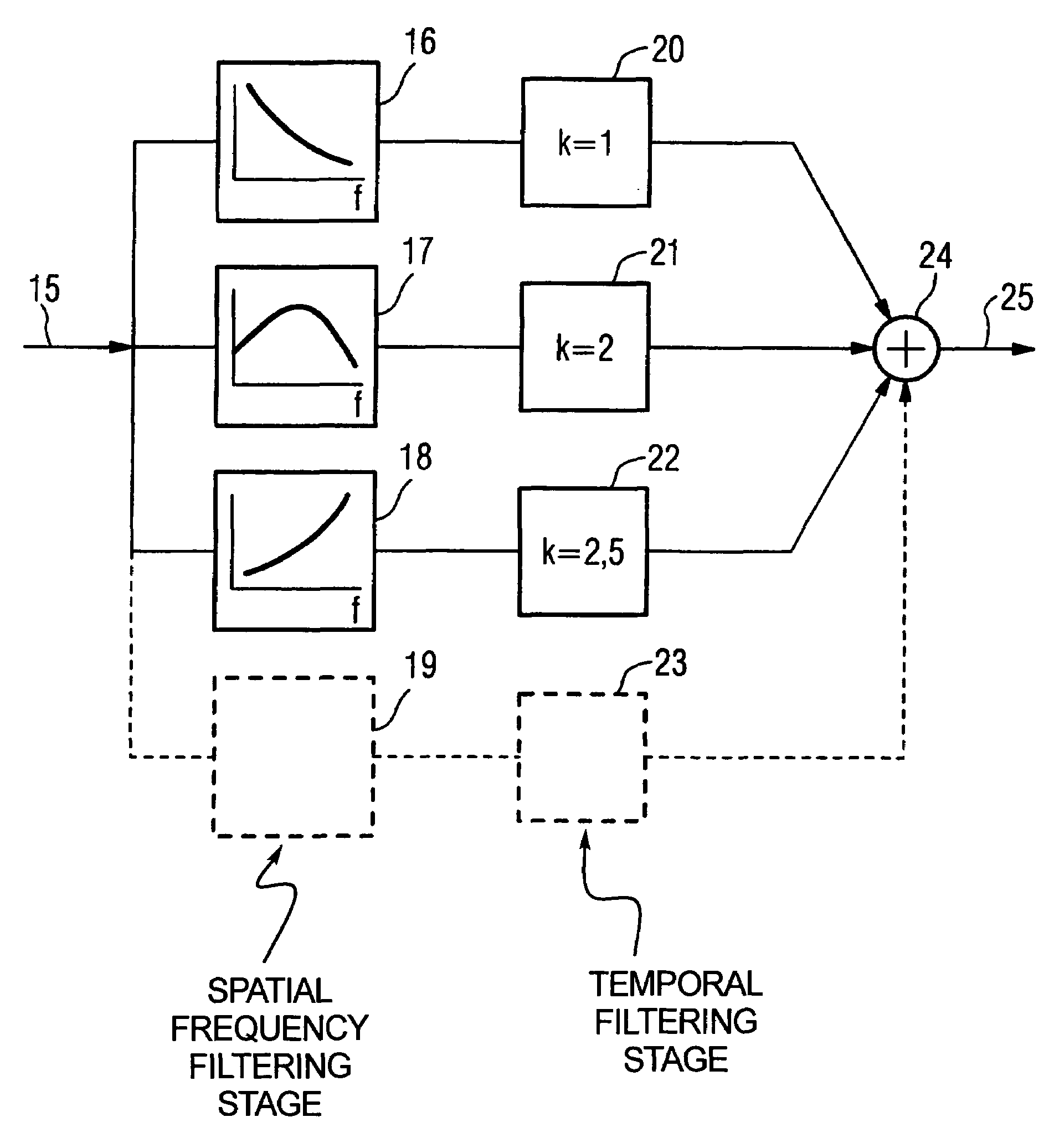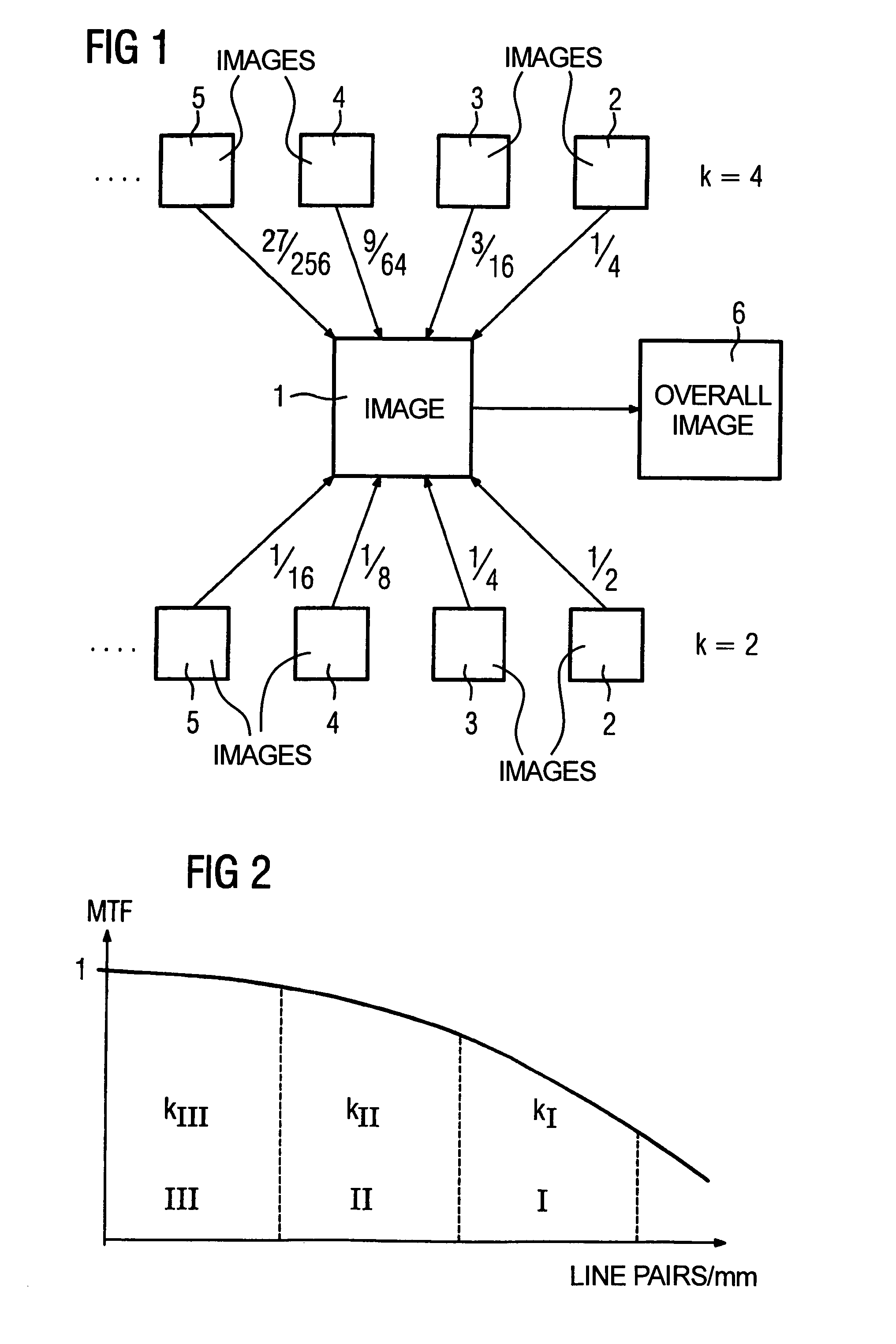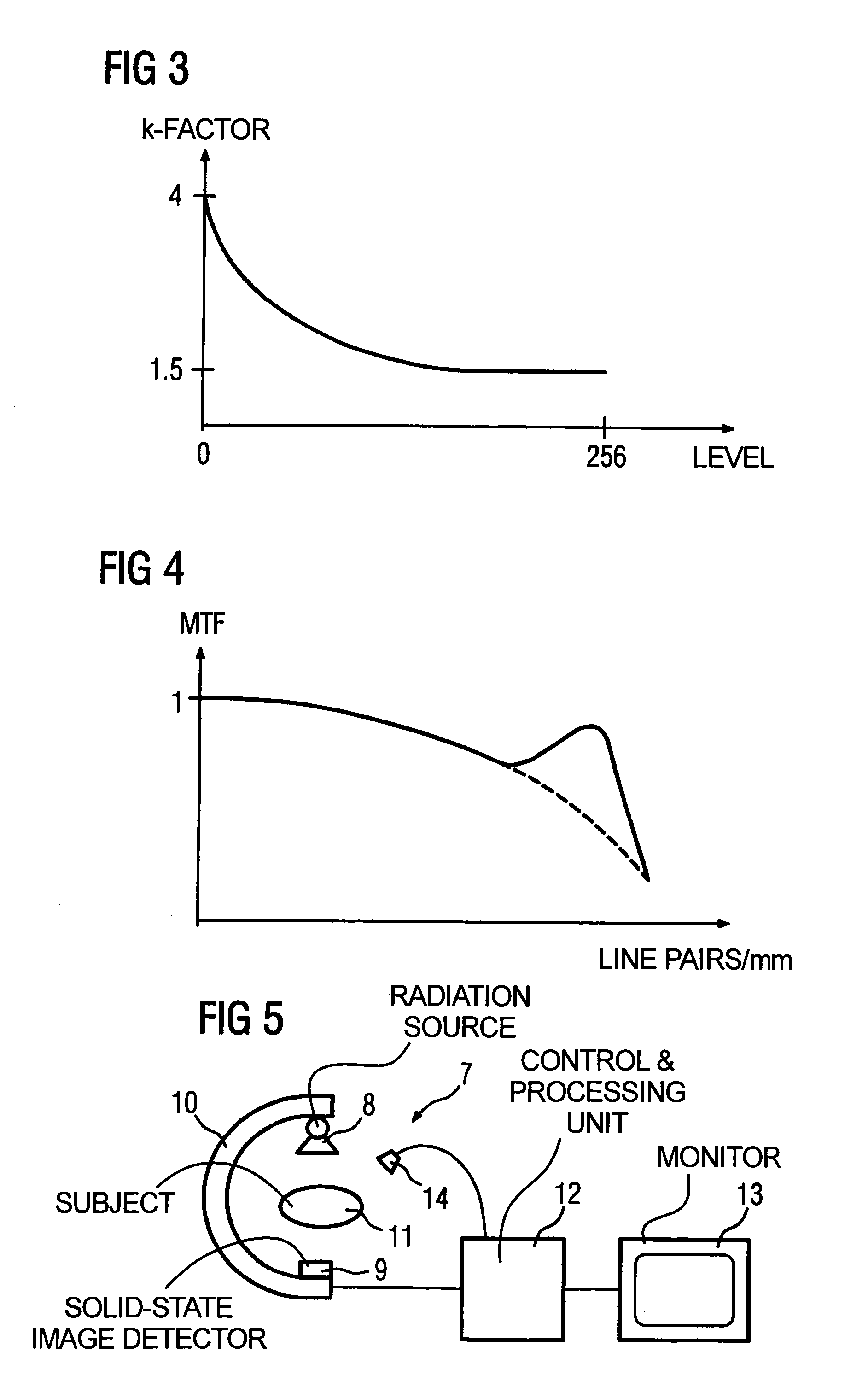Method for processing a radiation image sequence composed of a number of successively acquired radiation images acquired with a dynamic image converter
a dynamic image converter and sequence technology, applied in the field of processing a radiation image sequence, to achieve the effect of improving the image quality
- Summary
- Abstract
- Description
- Claims
- Application Information
AI Technical Summary
Benefits of technology
Problems solved by technology
Method used
Image
Examples
Embodiment Construction
[0029]FIG. 1 shows the temporal filtering of an image sequence in the form of a schematic illustration. An image sequence with a number of successively acquired images was produced, with a most recently acquired image 1 and images 2, 3, 4, 5 acquired earlier in chronological succession being shown in the illustrated exemplary embodiment. In the framework of the temporal filtering, a filter factor, referred to as a k-value, is then defined that indicates the proportions with which the spatial frequency spectra of the images acquired chronologically earlier are mixed with the spatial frequency spectrum of the most recently acquired image 1, and a filtered image 6 is generated therefrom. The respective proportion given a k-factor of k=4 is shown by example in the upper part of FIG. 1. Contributions of ¼ from the spectrum of the image 2, 3 / 16 from the spectrum of image 3, 9 / 64 from the spectrum of the image 4, 27 / 256 from the spectrum of image 5 are mixed as proportion with the spectrum...
PUM
 Login to View More
Login to View More Abstract
Description
Claims
Application Information
 Login to View More
Login to View More - R&D
- Intellectual Property
- Life Sciences
- Materials
- Tech Scout
- Unparalleled Data Quality
- Higher Quality Content
- 60% Fewer Hallucinations
Browse by: Latest US Patents, China's latest patents, Technical Efficacy Thesaurus, Application Domain, Technology Topic, Popular Technical Reports.
© 2025 PatSnap. All rights reserved.Legal|Privacy policy|Modern Slavery Act Transparency Statement|Sitemap|About US| Contact US: help@patsnap.com



